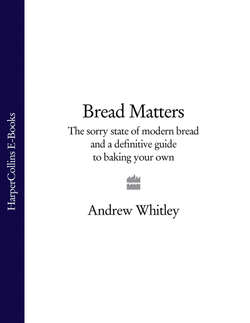Читать книгу Bread Matters: The sorry state of modern bread and a definitive guide to baking your own - Andrew Whitley - Страница 20
About time, too
ОглавлениеFor almost all of mankind’s baking history, bread had taken a long time to rise. Bakers’ barms or sourdoughs contained relatively sparse populations of mixed strains of ‘wild’ yeasts. Whatever they were and wherever they came from, the one thing they had in common was that they worked slowly. The whole process from starter dough to finished product could take 24 hours or more. Single varieties of the most active strains of yeast appeared in the late nineteenth century and made faster fermentation possible. Though convenient, this was an expensive commercial option and most bakers eked out their yeast by using the sponge-and-dough method described above.
As the price of yeast came down and productivity pressures grew, fermentation times shortened. With the invention of the Chorleywood Bread Process, the goal of ‘instant’ dough became attainable. With new machinery, ingenious chemistry and a terrific blast of (ever so slightly modified) yeast, bread needed no fermentation at all.
It was good for business, of course, and the manufacturer’s costs could be contained or reduced. Everyone could now afford the whitest, softest bread they had ever known, though, curiously, consumption kept on falling.
Research has recently revealed that making yeasted breads quickly may not leave time for important changes to take place. For example, fermenting dough for six hours as opposed to 30 minutes removes around 80 per cent of a potentially carcinogenic substance called acrylamide that is found in bread crusts11, and long yeast fermentations conserve the highest levels of B vitamins in dough (48 per cent of vitamin B1 is lost in rapidly made white bread)12.
